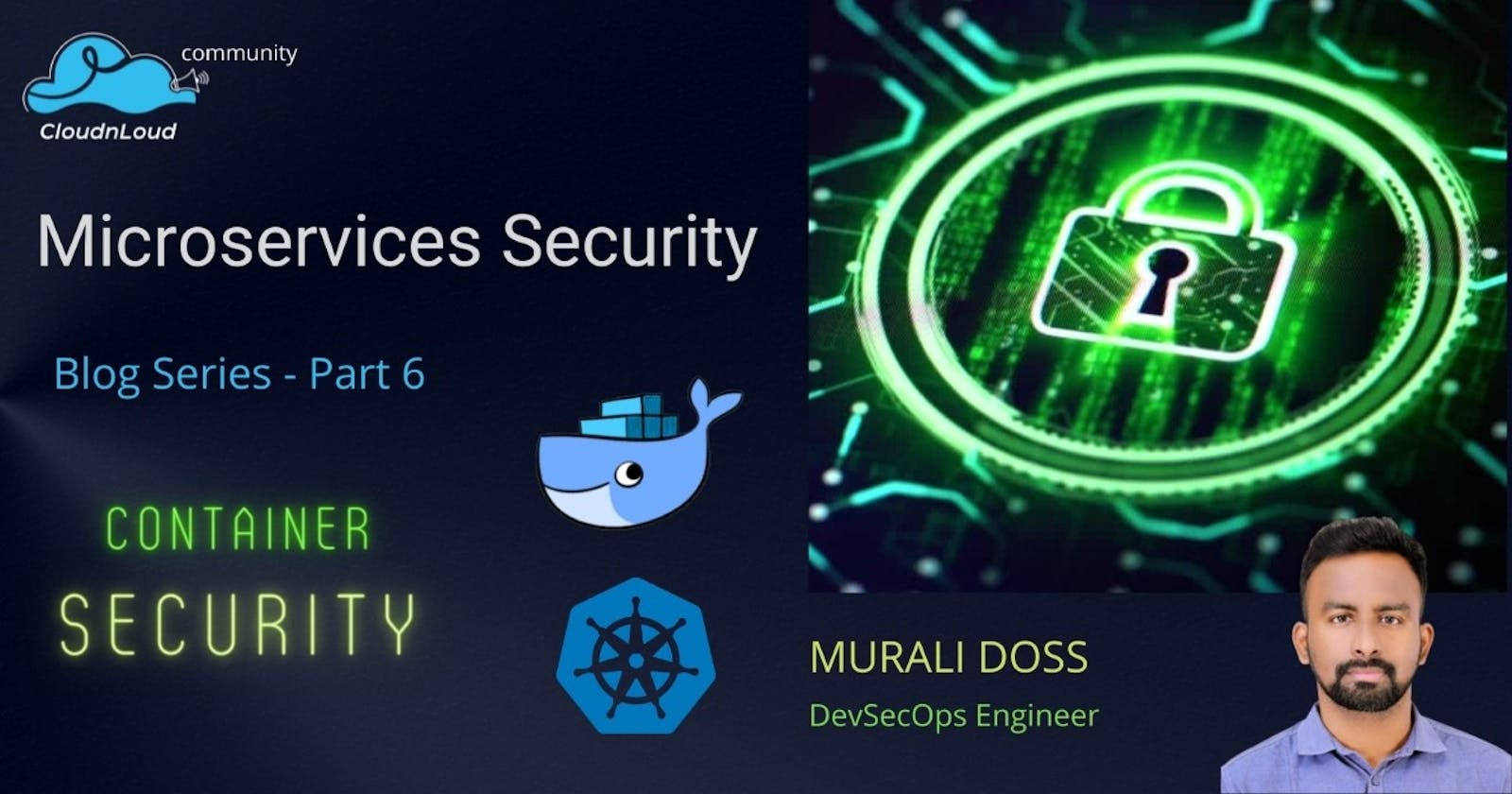How to secure your Containers?

Container Security is the process of securing the microservices containers from any vulnerabilities and security risks with different security tools and compliance implementations. There are many areas where the containers have higher chance of exposing to potential risks. Mainly in the process of CI/CD pipeline and in the weak network configuration of container orchestration environments.
Container Image
There are several things to ensure the containers are safe and secured. One of them is the container images. First, we need to make sure that the image we used to build a container should be up to date. Also, the images should be scanned using any image scanning tools for any vulnerabilities. We can also use images with digital signature that allows any user to add a digital fingerprint to an image in order to verify the source and trust the image. One another thing to remember while creating an image is that you should not run the image as root while creating the container out of that image. This need to be taken care while creating the image for example, say the Dockerfile should be configured accordingly. Also, be cautious of what you install or configure inside the Dockerfile. I would suggest you to use of the multistage distroless customised images that also adheres to the CIS benchmark policies.
Image Registry
It is also important to talk about securing the image registry. Image registry is a repository where you store all your container images. It is always better to keep your image registry private to avoid the public access of the repository. In addition to that, you have to be scanning the image registry regularly for any vulnerabilities. Major cloud providers like AWS provides you option to scan their image registry ECR by integrating with its Security scanning service called Amazon Inspector. Similarly other cloud services providers like Azure (Microsoft Defender) and Google Cloud (Container Analysis) also offer their own services to scan their image registries. If you wish to have your own private registry, then taking care of the security of the underlying host is also mandatory.
Container Orchestration Level
Furthermore, you need to have a robust monitoring tool in place that should take care of all these container related components mainly the container runtime or the container orchestration if any. Apart from these, you should also focus on the application security which is more important than the network security. When it comes to the container orchestration like Kubernetes, you should need to set the resource limits and ensure secure pod communications. However, nowadays the most robust approach for such security implementations is making use of the zero-trust policy where we close everything by default and open communications only for the authorized users.
Conclusion
Eventually, there are some common approaches also like hardening the security of the underlying hosts and operating systems. This ensures an additional layer of defense to your architecture. Some of the most popular container security scanning tools are Docker bench, Qualys, Anchore, Aqua Security and so on.
I hope this blog post will help you to get a simple and basic understanding of how to secure your Containers. Please do follow me on below social forums for more such technical posts.

